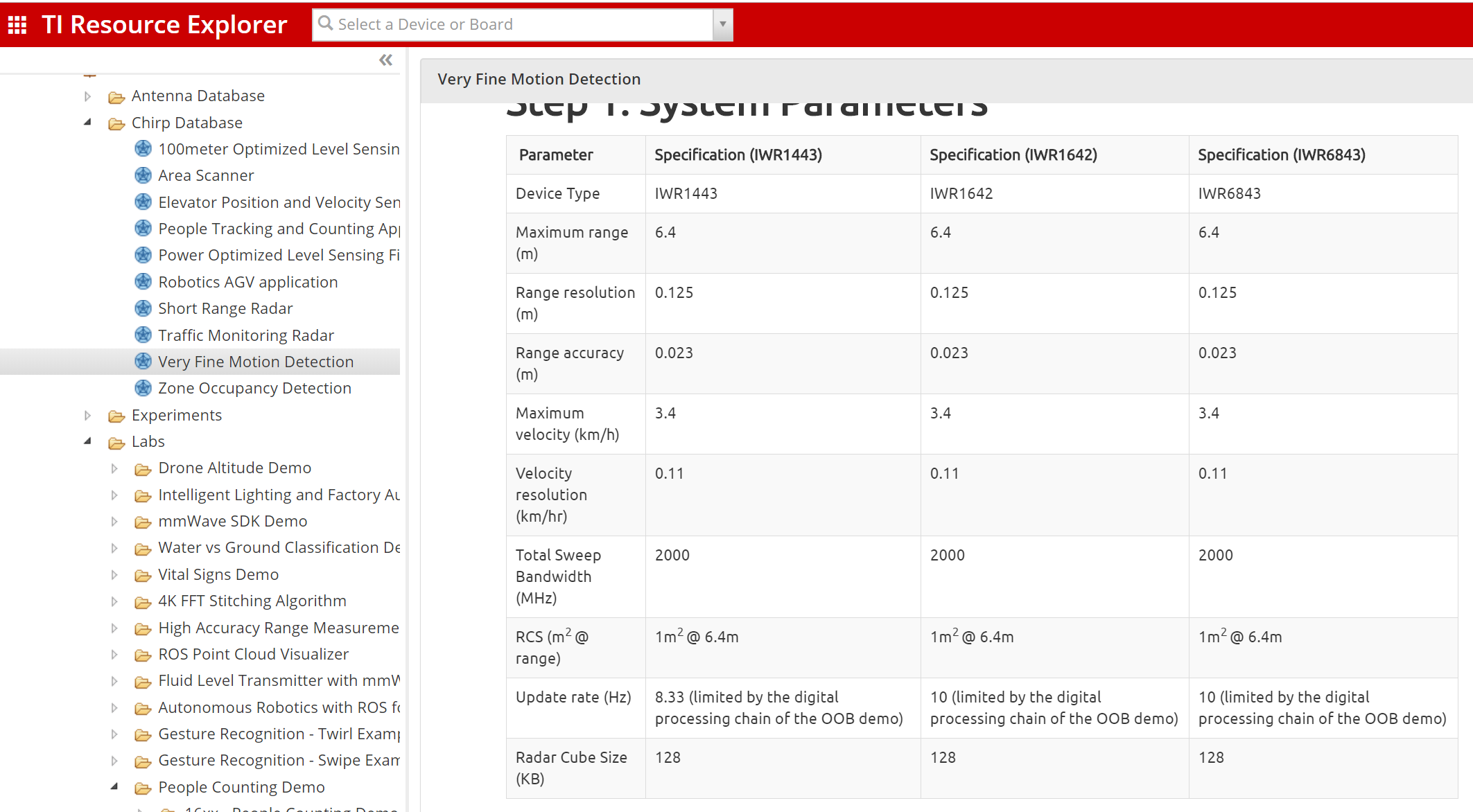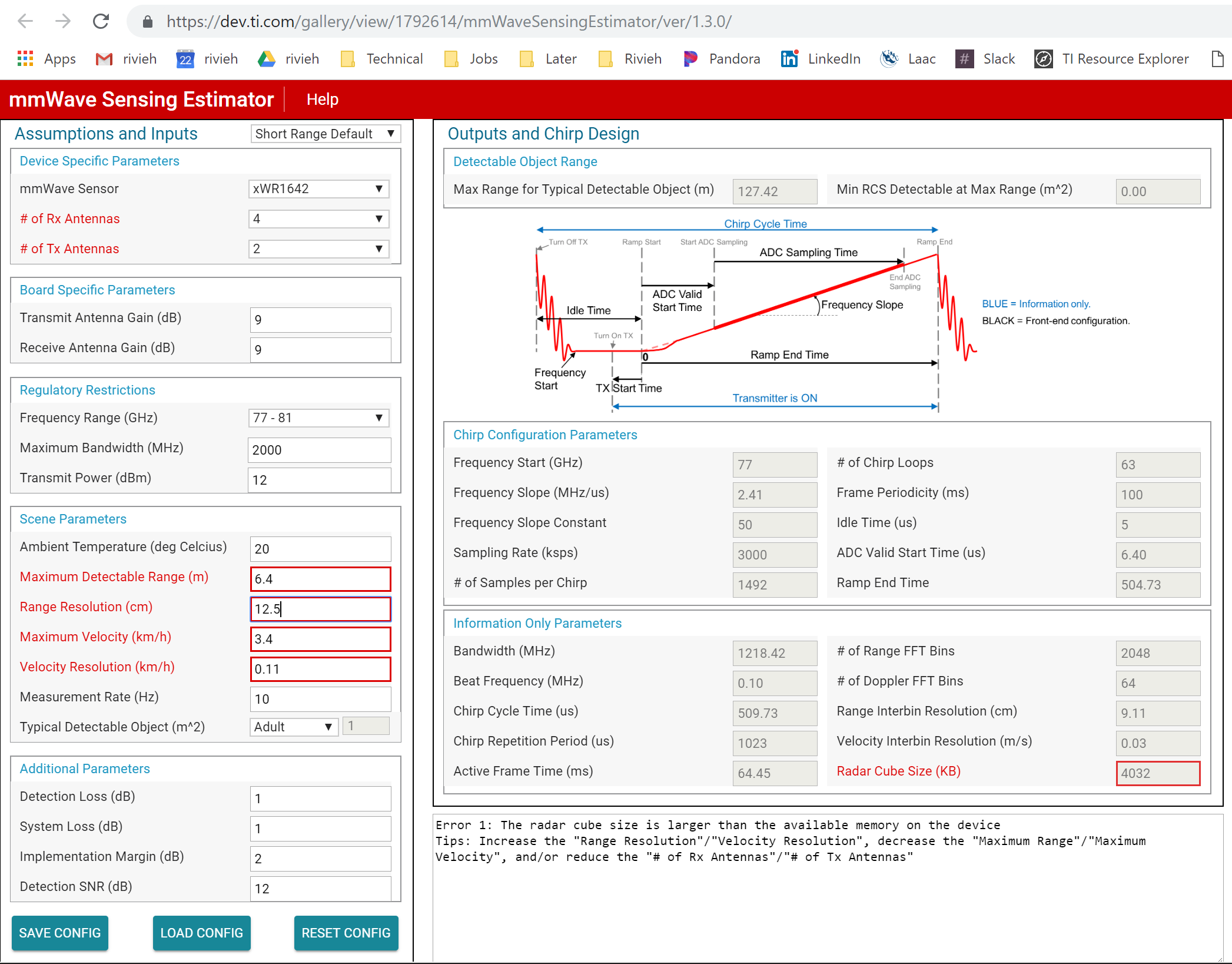Other Parts Discussed in Thread: MMWAVE-STUDIO, IWR6843ISK
Hello,
I am having trouble with mmWave sensing estimator generating chip settings using input parameters that I believe to be acceptable. So to debug the issue, I plugged in input parameters from one of the chips listed under the industrial toolbox chip database (fine motion) and I am still getting an error. I am assuming the chip published in the industrial toolbox are valid chip so I am not sure if I am doing something wrong. Attached are the screenshots of the chip I am trying to configure (fine motion for IWR1642) and the sensing estimator inputs/output.
Thanks! Mustafa



